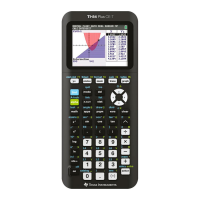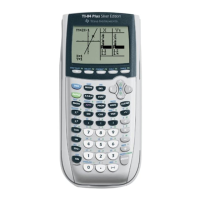108 Chapter 2: TI-83 Plus Specific Information
TI-83 Plus Developer Guide Third Release May 28, 2002
Function Evaluation
Applications may need to evaluate (parse in TI-83 Plus terminology) functions
(equations). Using the TI-83 Plus, equations can only contain functions that return
values. Programming commands and other commands that do not return a result to Ans
are not valid in expressions, and therefore can only be executed from a program
variable. See the TI-83 Plus Graphing Calculator Guidebook for more information.
Parsing an equation is done to return the value of the equation with the current value of
the variables that are contained in it.
Equations can only be parsed if they are stored in an equation variable, an EquObj data
type — for example Y1, Xt1, or a temporary equation variable.
Errors can be generated during parsing. If this occurs, the system error context will take
over and in most cases, cause the application to be shut down. Applications should
install error handlers before parsing equations in order to stop the system error context
from activating.
See the Error Handling section in this chapter for further information.
Parse Routine
ParseInp — executes an equation or program stored in a variable.
• Inputs: OP1 equals the name of equation to parse
• Outputs: OP1 equals the result if no error was reported. The output can be any
numeric data type including strings. If the result returned from the parser is:
– RealObj then OP1 equals the result — a floating-point number.
– CplxObj then OP1/OP2 equals the result — two floating-points numbers.
– ListObj, CListObj, MatObj, or StrngObj then the name of a variable that contains
the result data is returned in OP1, a temporary system variable. Use of
temporary variables returned by the parser will be explained later in this section.
• The parser can create temporary variables even if a temporary variable is not
returned as the result.
